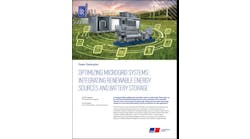By Elisa Wood
August 13, 2009
The energy industry tends to get stuck on certain words. Silver bullet is one of them. Insiders and policymakers often like to say there is no silver bullet to fix US energy woes. We need a portfolio of solutions – renewables, efficiency, smart grid, transmission expansion, coal sequestration, etc.
That may be true, but Tom Casten begs to differ. Casten is a bit of a rock star in the field of decentralized power. He has more than 30 years in the business and leadership positions in key organizations. It’s not unusual to see him quoted on energy not only in the trade press, but also in magazines like Forbes. So folks looking at alternatives tend to listen to him.
“I think there is a silver bullet, and I think it is all about the way the world makes power,” he said at the International District Energy Association conference in June. (Listen to his presentation at www.districtenergy.org.)
Or rather, it’s about the way the world wastes energy.
“Generation inefficiency is the elephant in the room. Nobody talks about. We put all kinds of policies into doing other things and ignoring that because most of industry makes money on this inefficiency,” he said.
The inefficiency he describes is the waste heat that power plants emit. It accounts for about two-thirds of plant fuel use, and it ends up floating into the sky unused. Weirdly, we know how to solve this problem, we have for decades – through combined heat and power plant. These plants marshal the waste heat and pipe it, so that it can be used for other purposes, such as steam energy for a college campus or an industrial process.
We use combined heat and power to generate only about 80,000 MW, about 9 percent of US total electric capacity. Of course, combined heat and power doesn’t make sense in all circumstances. But an Oak Ridge National Laboratory study released in December says the US could increase combined heat and power to 20% of capacity. Some Europeans countries have achieved this level –and they lack the large number of factories found in the US that can use the waste heat.
ORNL says it would take some regulatory tweaking to move the market to 20%. But one thing is for certain, there is no lack of interest in combined heat and power these days. The US Department of Energy recently offered $156 million in grant money for combined heat and power projects. By the time bids closed in mid-July, the DOE had received 359 applications for projects totaling $9.4 billion, according to Rob Thornton, IDEA president. “We knew it was going to be oversubscribed, but we never envisioned it being a 25 to 1 ratio,” he said.
Whether waste energy will emerge as the silver bullet remains to be seen, but clearly there is no longer a shortage of those aiming this bullet toward its target, the elusive werewolf of inefficient energy.
Visit Elisa Wood at www.realenergywriters.com and pick up her free Energy Efficiency Markets podcast and newsletter






